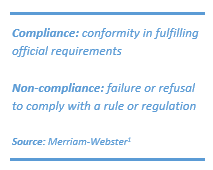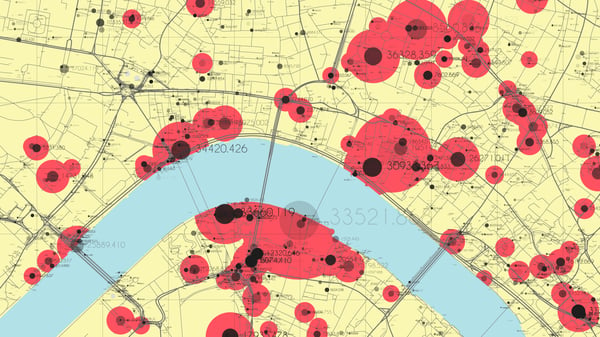4 Must-have Data Points for Dispatch-Billing Alignment and Maximum Reimbursement
Risk Management: Beyond ‘Checking the Box’
(4 min read) EMS workers carry heavy responsibility time and time again—on a daily basis
Was this information valuable?

(4 min read) EMS workers carry heavy responsibility time and time again—on a daily basis. Every mile of ambulance operations, their eyes scan carefully to avoid hazards and impedances on the roadway. The repeated strain of lifting and moving patients leaves them one stop closer to a career-ending back injury. Their hands performing clinical interventions present the unnerving threat of malpractice in today’s litigious society. At any moment, any single decision or action of EMS personnel may be heavily scrutinized after-the-fact. Best intentions aside, the high expectation of EMS is to efficiently and effectively render aid.
EMS personnel face a variety of risks every shift. Most of the time, they do the right thing to minimize or mitigate risks to themselves and their communities. Consequently, most of the time, tasks are performed with a favorable result.

Compliance & Non-Compliance

Most trouble can be avoided by simply following the rules. Laws and regulations serve a very important purpose. The words contained within these documents provide rule and order to protect citizens and maintain peace. The laws and regulations which govern the EMS industry are the basis for the standard of care which outlines the professional conduct expected of EMS personnel. Consequently, compliance with laws and regulations becomes a fundamental duty for each individual within an EMS organization.
The EMS industry has changed significantly over time. Today, EMS functions with a more stringent set of laws and regulations than ever before. Matched with a litigious society, EMS organizations are more likely to become involved in legal action, such as lawsuits, with greater frequency. Non-compliance (or even an appearance of non-compliance) by an EMS organization could be used to support a claim of gross negligence in a legal proceeding. Failure to comply with laws and regulations has the potential to have condemning consequences for an EMS organization.
Laws and regulations are often difficult to apply to contemporary issues due to lengthy legislative processes. Even when an EMS organization complies with the legal responsibilities of the present, the general public expects the organization to proactively address emerging issues. In order to stay abreast of these trends, an EMS organization should review relevant industry standards and best practices.
Checking the Box
An effective risk management program relies upon much more than legal compliance. An organization that is simply checking-the-box may have the appearance of having elements of a comprehensive risk management program, but be timid in actually addressing risk. Despite having a thick set of policy and procedures, covering every conceivable situation, this type of organization continues to suffer the consequences of recurring incidents. Leaders within an organization intent on checking-the-box may proclaim a “safety first” agenda, while attempts to conceal or deny the existence of personnel or patient safety issues are common. A sizable disconnect may exist between various levels of the organization. An EMS organization should look toward compliance as a baseline and aspire to proactively manage risk beyond the letter of the rule, regulation or law.

Are you relying upon luck?
Risk management3 can be defined as “any conscious effort that reduces the frequency, severity or unpredictability of an incident”. These conscious efforts, beyond checking-the-box for compliance, must occur at every level of an EMS organization in order to be effective. Leaders must design systems to prioritize the safety of personnel, patients and the general public. A set of expectations should be established and maintained to discourage unnecessary risky behavior. A multitude of hazards encountered by emergency services personnel can be better managed using proven risk management techniques1,2:
Risk Reduction – reducing the frequency of a particular loss
Engineering Controls – removing personnel from hazardous conditions by placing a barrier between the individual and the hazard
Administrative Controls – implementation of policies, procedures or guidelines to manage risk
Education - the process of receiving or giving systematic instruction
Training - the action of teaching a particular skill or type of behavior
Risk Transfer – transferring the potential consequences of certain specified loss exposures from one party to another
Risk Avoidance – ceasing or avoiding an activity so that the possibility of future gains or losses occurring from that activity is eliminated.
Your Culture of Safety
Through the use of a combination of risk management techniques an organization can aim to lessen the frequency, reduce the severity and more accurately predict when and where hazards may be present in the workplace. These techniques, when used properly, can be leveraged to effectively manage risk in a variety of industries, including healthcare and public safety. Developing a culture of safety within an EMS organization encourages all personnel to become more risk aware in the course of their daily activities. Each individual must accept their personal responsibility in identifying unsafe conditions and acts within their workplace.
References
Merriam-Webster. (2019). Retrieved from https://www.merriam-webster.com.
The Institutes. (2012). Risk Management Principles and Practices. Malvern: American Institute for Chartered Property Casualty Underwriters.
VFIS. (2016). Risk Management for EMS and the Ambulance Transportation Industry. York: Glatfelter Insurance Group.
Related Posts
How EMS Agencies Can Reframe Need and Refocus Resources With Geospatial Analytics
How To Minimize Radio Chatter and Reduce Guesswork With Smarter Dispatch Resource Management
ZOLL Pulse Blog
Subscribe to our blog and receive quality content that makes your job as an EMS & fire, hospital, or AR professional easier.
ZOLL Pulse Blog
Subscribe to our blog and receive quality content that makes your job as an EMS, fire, hospital, or AR professional easier.




